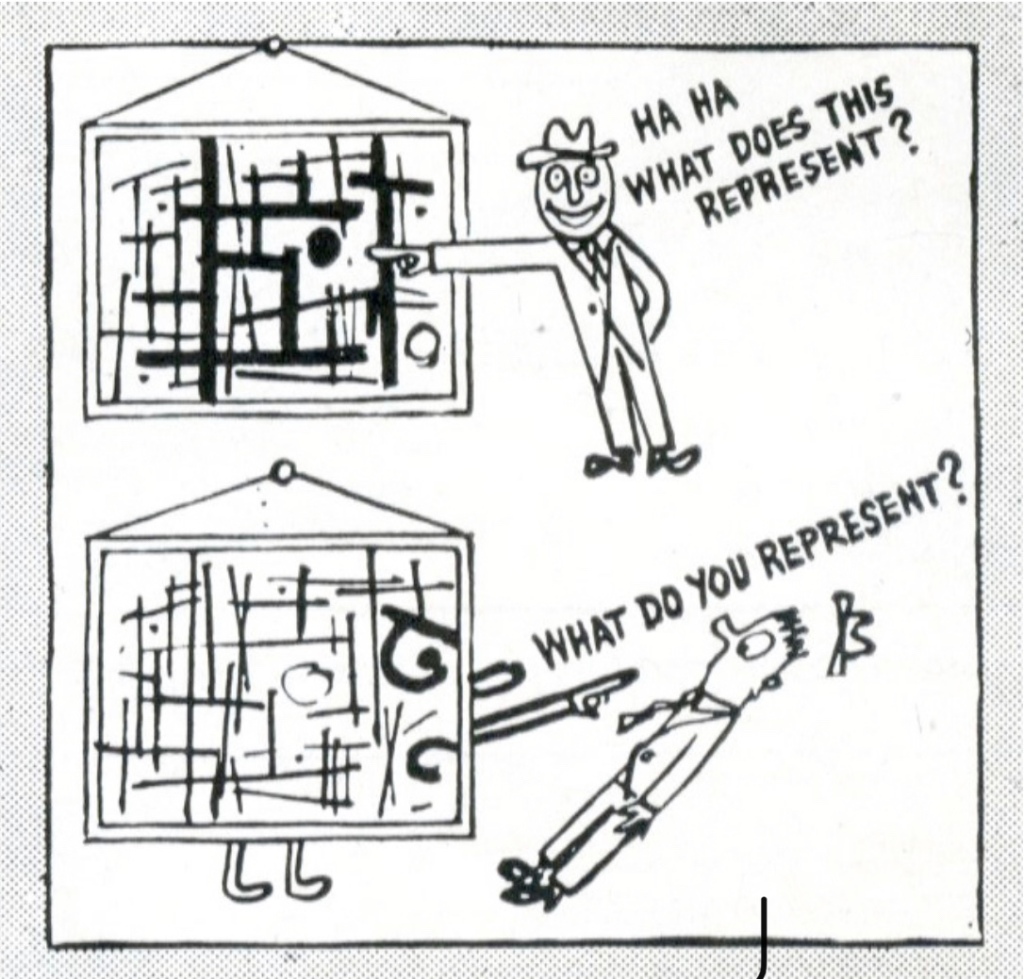
Abstract Expressionism – is a term which was first used to describe a Russian artists’ work. [Artwork: Wassily Kandinsky, Composition VIII, oil on canvas, 1923]. Abstract Expressionism was seen as one of the first examples of the American Avant-Garde movement. The term consists of two words – Abstract & Expression.
Abstract in art means that it doesn’t represent anything in reality, but aims to make an effect using colors and shapes.
Expression means letting and making one’s thoughts, emotions and feelings known.
If I would to explain this cartoon painting simply I would say that what the artist tried to say here is when you look at an artwork, every single person usually sees what’s inside them and takes it in that way, no matter what’s on the canvas. On the first part of the painting a man is laughing at an artwork and makes it clear he doesn’t see the meaning of it. Then on the second part, the painting responds with the same question asking what does the man represent himself. since abstract expressionism doesn’t represent anything real but evokes emotion in the viewer using its appearance the artist rely on expressing their own emotion but it doesn’t have to respond to one watching the painting. Different colors and shapes can mean different things to people, so that two people can look at the same painting but feel and see things which aren’t common.
Abstract expressionism is about relating the look of the painting to one’s self and thinking about his own emotions towards it. It can’t be questioned, because there is no right answer.